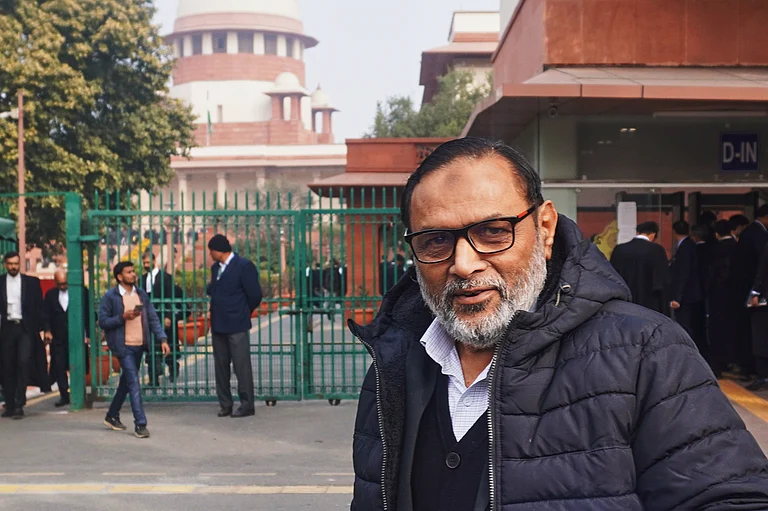A lively heritage walk takes you to the places that are the signposts of the momentous events of the Indian Mutiny of 1857 in the city of the nawabs In the twilight years of the Mughal Empire, the emperor split up India into 12 provinces to be administered by subedars (governors). Under the steerage of the Nawabs, who served as provincial representatives of the Mughal emperor from 1776, the chosen seat of governance of Awadh was Lucknow.
Over time Lucknow came to grab the spotlight for laying the grounds for the Awadh dynasty, its great wealth and legendary courtly life that was the ultimate in Oriental culture. Under the influence of the fourth nawab wazir of Awadh, Asaf-ud-Daullah, who moved the capital from Faizabad to Lucknow, the Awadhi court became “the cultural star in the northern firmament”.
Over time, despite the mounting pressure of British aggression in India, wealthy Awadh remained one of the last bastions to hold on to its fading glory. When Nawab Shuja-ud-Daullah made a deal with the English to allow a British Resident to have a presence in Awadh it was a huge misstep for which the Awadhi nawabs were to pay a heavy price.
Lucknow was a precious pearl that the English wished desperately to possess. Though they sneakily managed to summarily depose the 24-year-old indolent Nawab Wajid Ali Khan as an incompetent ruler, the subsequent annexation of Awadh was to also sow the seeds of rebellion and the Sepoy Mutiny of 1857.
Unravel those poignant moments of Lucknow’s history of these disruptive times with Roobaroo Walks which leads you to some of the hotspots in the city, which were silent witness to the unfolding of the drama of India’s early freedom fighting days. You will also get to explore various narratives of historical recordings and interact with war survivors who proudly narrate their stories.
Lucknow's role in the Indian freedom struggle is pretty unique because of its role in the 1857 uprising. What started out as a mutiny by inflamed Indian soldiers, and was also joined by many residents of the city who wanted to get rid of the British, this uprising is also known
as the First War of Independence. During the unrest, many monuments in Lucknow played pivotal roles in the battle that spanned over a year.
Your wanderings through the city swing you back to those tumultuous days when grand British structures and gardens became battlegrounds for brave Indian soldiers fighting British rule. The walk also introduces you to the stories of war heroes, war strategies, quick
retreats and fierce battles. Relive those early days of the Indian freedom struggle through various narratives of the Lucknow’s landmark settings.
The feisty Hazrat Mahal, begum of Wajid Ali Shah, tried to hold her family together when the Nawab was exiled by the British. It was Hazrat Mahal which supported the Indian mutineers during the siege of the British Residency in retaliation to their punishing acts and demolition and seizures of buildings such as the Moti Mohal, and the old military headquarters, the Macchi Bhawan Fort and the house of the wealthiest moneylender in Lucknow, Shah Behari Lal, amongst these.
Wander through the grounds of the ruins of the Residency, which witnessed some of the fiercest fighting during the uprising. Now a memorial, the Residency is where the legendary Commissioner of Awadh, Sir Henry Lawrence, ended up losing his life from the wounds he
sustained in the siege. Pour over hurriedly-put-together maps for the army movements at the small museum which offers a window to India’s first war of Independence. The collection on display includes, old photos, paintings, documents, weaponry of the time et al.
Bullet pocked buildings and the nightly Sound and Light Show recall the events that this British enclave witnessed during the days of the Sepoy Mutiny in Lucknow. The Residency Cemetery is a poignant roll call of the British inhabitants, including women and children, who lost their lives during the 6-month siege. This game-changing event saw the immeasurable loss of life and property for both Indian rebels and British residents of Lucknow.
Ruminate over the brutal destruction of Lucknow’s other grand structures during the fierce face-off between the English and the India rebels. Many of the palatial landmarks were ruthlessly bull-dozed into rubble or severely damaged by the English. A letter from the Secretary of the Chief Commission to the Commissioner of Awadh clearly stated that, “It is not by an indiscriminate massacre of the wretched sepoys that we should avenge our kindred.” ... They should totally destroy the city of Lucknow so that the “mutineers were
taught a lesson”.
With Lucknow now in their hard grip the English soldiers resorted to unabashed looting and destructive mayhem in the Kaisarbagh complex of palaces. This mid-19 th century beautiful palatial sprawl lost many of its buildings to military assaults during the early days of the
Mutiny of 1857. Qaiserbagh, the Versailles-like palace was severely damaged and then demolished. The complex also housed the Safed Baradari which just about survived this onslaught. Gaze upon this architectural marvel built in white stone. The Chattar Manzil Palace Complex, once the palatial residence of the rulers of Awadh and their wives, now serves a government office. Spend poignant moments at once exquisite Dilkusha Kothi. All that remains of an eighteenth-century house built in the English baroque style are a few towers.
Sikandar Bagh – is a villa and garden enclosed by a fortified wall, with loopholes, gateway and corner bastions. You will pop into La Martinière College, which once served as the magnificent palace of Claude Martin, a penniless French soldier- of -fortune who arrived in India, intent on making it big. Having assiduously worked his way into becoming a confidant of the Nawab, Martin ended up becoming the richest European in Lucknow at the time.
Though the walk doesn’t include the Sound and Light Show at the Residency, it comes highly recommended as a must- watch. You should also, on your own, visit the GPO, which was known as the Ring Theatre and was a leisure hub exclusively for the British. It became notorious for being converted temporarily into the site of a special court for the trial of the perpetuators of the Kakori Kand or Kakori conspiracy case, involving over a dozen members of a group of Indian freedom fighters from the Hindustan Republican Army. Jail sentences were meted out to some of them and a death sentence to four. Freedom fighter Chandra
Shekhar Azad escaped and died later in Allahabad in a gun battle.

























